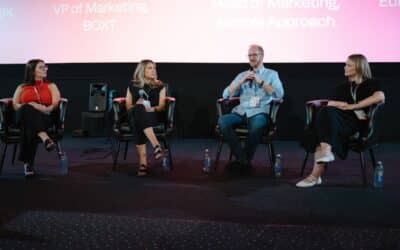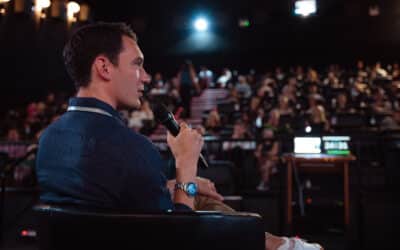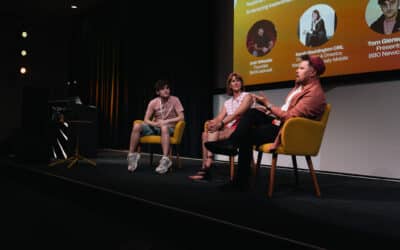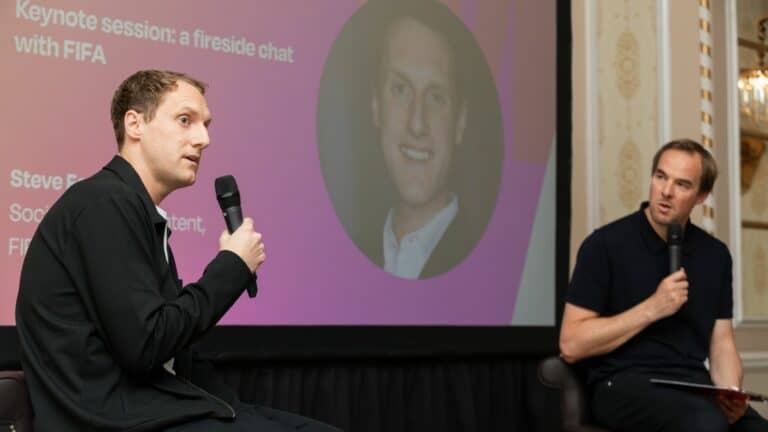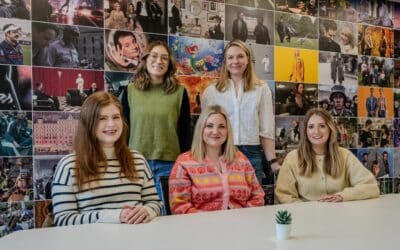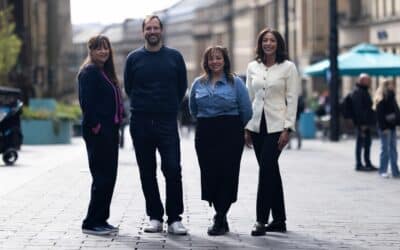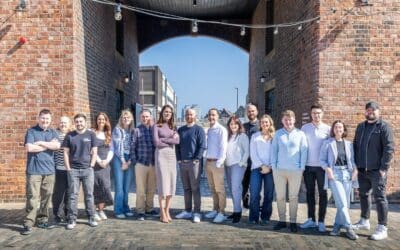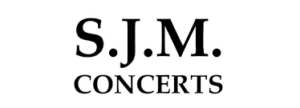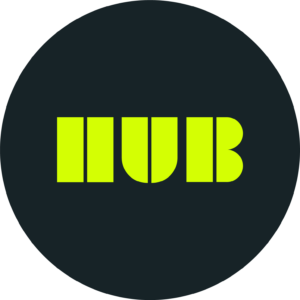After two jam-packed days of marketing insights across Newcastle and Leeds, the final leg of the Northern Marketing festival arrived in Manchester yesterday with leaders from the likes of FIFA and National Football Museum.
Hosted at Manchester Hall on 26 June, the day kicked off with a welcome from Prolific North’s editor and host for the day, David Prior, who thanked headline partner Embryo and event partners Poke, Digitaloft, Lesniak Swann, mFuse, Impression and StrategiQ.
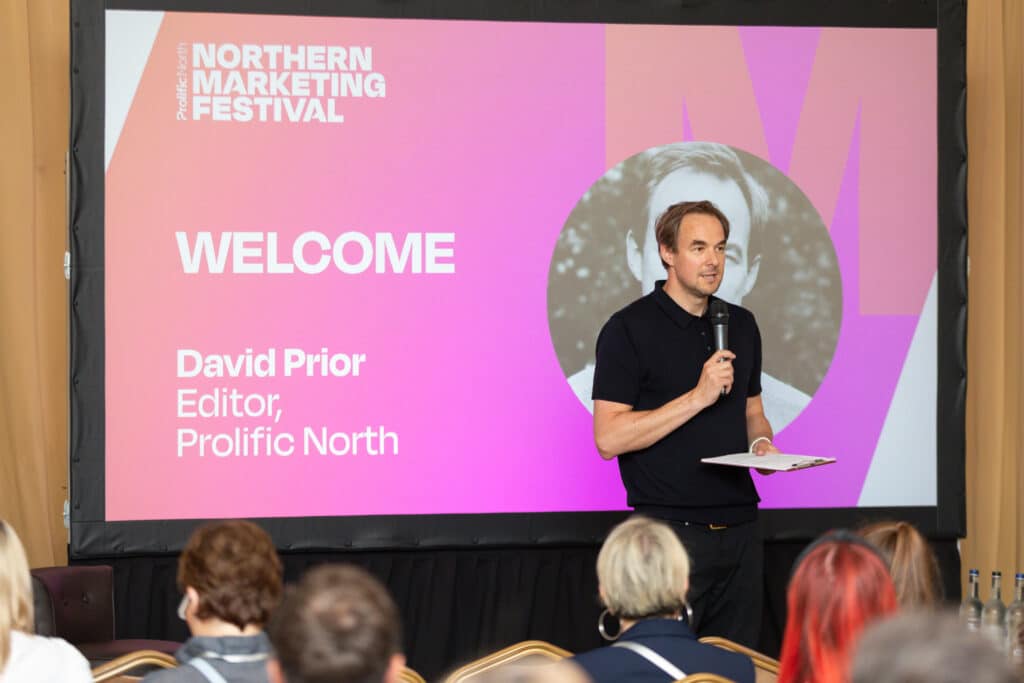
Mike Weir, head of behavioural science at Impression, took to the stage next with a fascinating deep dive into behavioural science and the key principles needed to engage audiences.
Providing an overview of the M.I.N.D.S.P.A.C.E Model to unpick how experimentation and research can be used to sharpen marketing, he explained how one of the most important things in advertising is retaining attention.
From effective storytelling through UGC content to build trust and engagement to how the best websites use content to build emotion and drive action through discounts or awards, he shared how attention is “finite” and marketers only have a few seconds to get a message across.
Factors such as consistent marketing messaging in guiding behaviour, building emotion and memorable content can help push consumers to desired outcomes but ultimately, his best piece of advice was to experiment with different techniques.
“Don’t do this type of stuff without experimenting,” he explained. “The more you invest in assumptions, the more it will be costly. Experiment and test. The more experiments you do, the more your marketing will be effective and customers will like you more.”
There was an impressively succinct introduction to network science and untangling the web next with James Welch, chief innovation officer at Embryo.
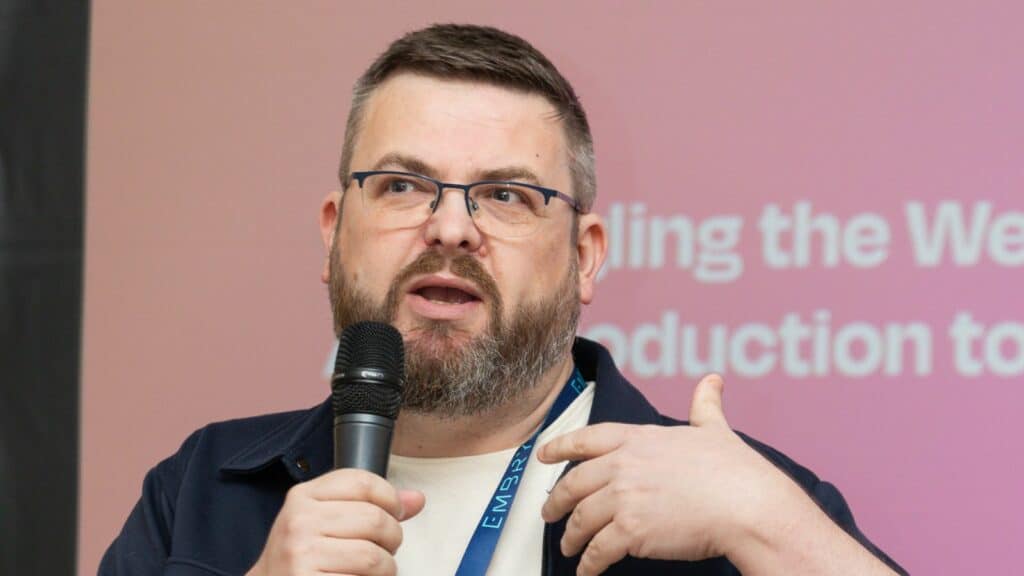
From the complex networks that makeup cities, society, the universe, the internet and even an ant colony in Nicaragua, following an overview of network science he explained how understanding these complex networks can make people better marketers.
Delving into how the Google algorithm is down to network science and how all networks in the universe appear to “follow the same pattern”, if marketers apply network science to work it can help achieve “better results” and create more impactful strategies to grow businesses.
Network science has been the “secret” to Embryo’s growth so far and has helped the agency to “grow really fast”, adding that he would love Manchester to become the “network science capital of the world”.
Corrie Jones, head of social media at StrategiQ, followed with her insights into how to create a culture of experimentation and play on social media.
After exploring case studies and takeaways from current trends plus the impact of behavioural science, she explained the ‘power of tiny gains theory’ where with every experiment marketers do on social media you can get at least 1% better.
She detailed five key principles to empower social media teams to be more creative and make content more successful which included experiment with purpose by having total clarity on your audience and brand. The second was on the team agreeing on where the brand’s line is and what constitutes a success or a flop when experimenting. The third included inviting creative ideas from everyone in the business, carving out time for creativity each week and marketers leaders should help cultivate this.
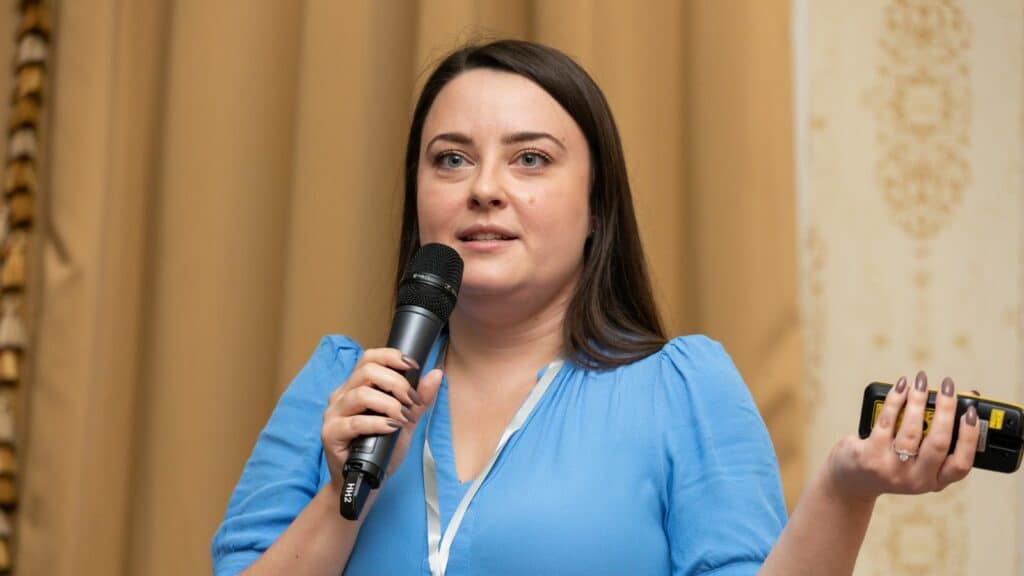
Watch out for naysayers and ‘hippos’ – a highly paid person’s opinion – and the final principle was understanding that you “don’t always need to reinvest the wheel”, sometimes you just need to fix the engine.
Wrapping up the session with a question inspired by Nick Entwistle at One Minute Briefs, she asked: ‘What’s the best that can happen?’
A highly anticipated fireside chat was up next with Steve Feekins, social Media & Content at FIFA, who is based in Newcastle. Following an overview of his career journey, he shared how he has been with FIFA for 12 years now, first starting out doing content on the website which has since evolved into social over the last five years.
With an impressive following of more than 200m on the FIFA World Cup and Women’s World Cup across TikTok, Instagram, Facebook, YouTube and X, he explained how digital and social has “majorly expanded” over the years with FIFA’s focus on growing channels.
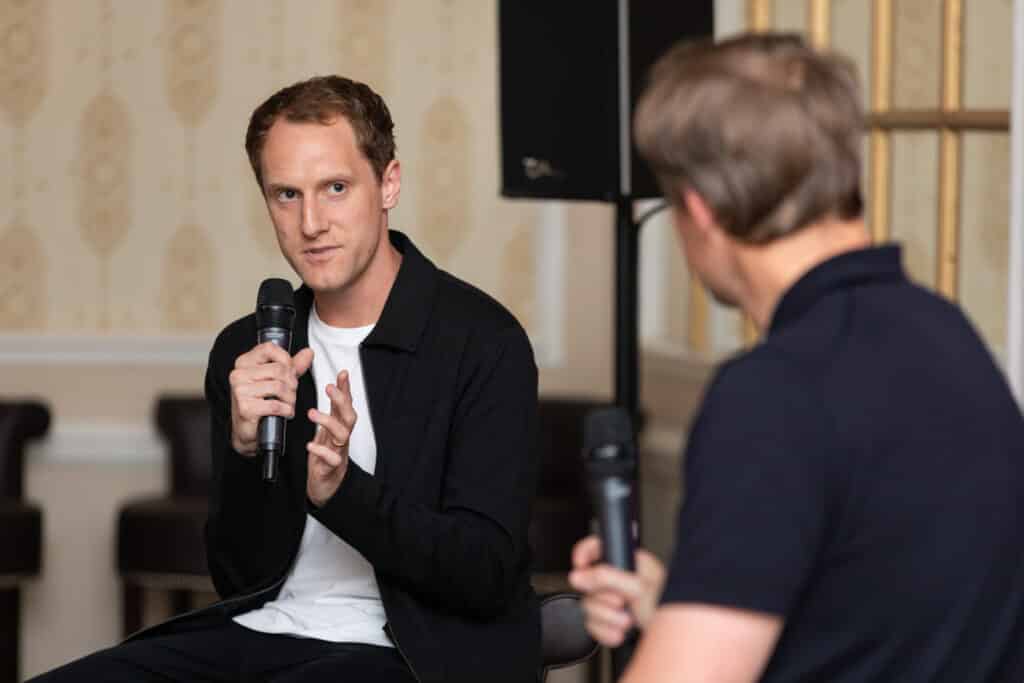
Prolific North’s editor David Prior quizzed Feekins on how much things have changed across social media over the years. Feekins said it has been “huge” especially with the Women’s World Cup.
As someone who is always thinking of events, even 36 months ahead, planning content in advance with throwbacks or archive content can help “reach audiences with the right content”.
The world of football can be fast-paced and “chaotic” at times, so the team tries to plan as much as possible but also tries to tap into those trending moments.
He stressed the importance of being flexible to change things when needed, with FIFA being “really reactive” as audiences want FIFA to join in on conversations too.
When it comes to creativity and experimentation, testing things out when there is less pressure and “all eyes” on major tournaments helps build case studies for the future.
The social team have brainstorming chats and insight calls when it comes to testing things out, asking everyone on the team for the one piece of content they liked and what surprised them before running through them.
On what growth looks like to FIFA through social media, with a major online following the “big growth” area is now on the women’s games.
“New partnerships, reaching new audiences and territories is really important,” he explained.
Next up was a dedicated panel discussion hosted by Alex Swann, founder of Lesniak Swann on what consumer marketers can learn from B2B specialists alongside Jeff Coghlan, founder of Matmi and representatives from Running Total Media and True.
During the discussion, the panel explored how B2C often dominates the conversation but how consumer marketers could learn a trick or two from B2B.
On how B2B and B2C agencies differ, the B2C world almost always has a benefit of larger budgets which can lead to “larger fragmentation” with a wider ecosystem of agencies. Whereas on the B2B side, clients tend to put all elements of the brief into one agency, meaning B2B agencies have to be “experts on everything” from creative all the way to insights. Key takeaways for the audience included how B2B can make a “big difference” and build “long-term value”.
We delved into the world of digital PR with Chloe Bennett, head of digital PR at Digitaloft, next. She emphasised why every business needs to “rethink the success of digital PR” with successful tactics for coverage including thought leadership, to always being reactive by providing comments on trending or newsworthy topics.
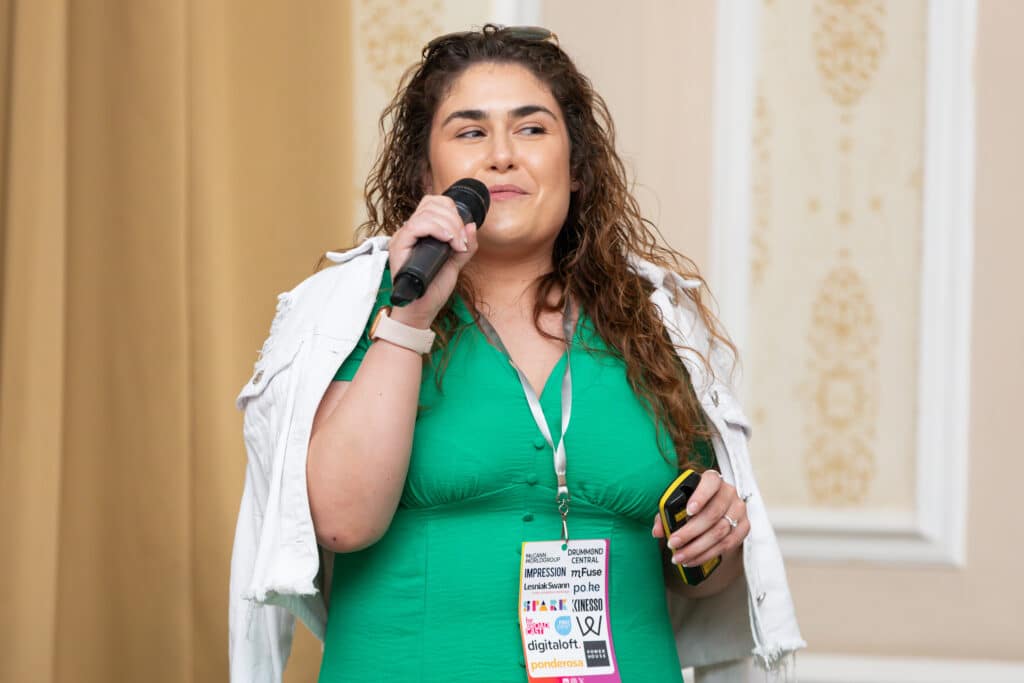
Although digital PR has a “reputation” and previously was just about link building including spam for SEO, this has “changed massively” and can do anything from building trust with consumers to creating brand awareness or driving organic growth.
Measuring the impact of digital PR to prove its importance is key, especially when it comes to reporting as leaders often don’t understand the importance of impact of digital PR.
Janine Ross, marketing and communications director at National Football Museum and Nicola Docking, managing director at Poke, took to the stage next, to showcase the recent successful rebrand of the National Football Museum and how the brand and agency explored experimentation, play and creativity to put football on the cultural map and appeal to a much wider audience than just football fans.
A rebrand should be fun and exciting but can be tense, however working with Poke was “collaborative from the get go”, explained Janine Ross. As a charity, National Football Museum is about delivering “tangible wellbeing benefits to visitors and communities” and wanted to reflect recent changes to the business and refocus its mission as an independent charity.
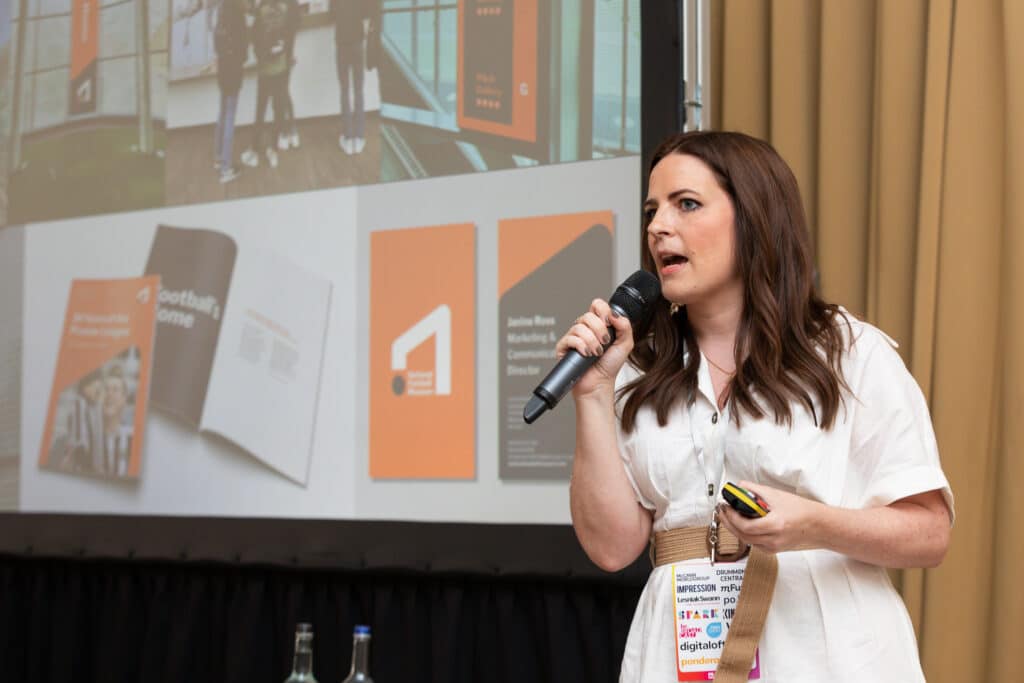
Nicola Docking detailed the pitch process with four iterations, with mood videos and creatives for each one. On what made Poke’s rebrand pitch and ideas stand out for Janine Ross, she said the “step-by-step process really worked” with the in-house team working really closely with the agency on aspects of the creative process, the museum’s values and mission statement.
Four weeks on from launching the rebrand, it has already had an impact – from the sentiment internally, the growth of merch sales and even visitors using the right entrance after ten years.
Mark Newnes, managing director at mFuse, followed with an insightful session with practical media and creative strategies that brands can utilise to have a greater impact on marketing.
With an overview of the successes of mFuse’s founding clients such as TalkTalk and Virgin Money, he explained how being outspent by your competition does not mean you have to be outfought in the fight for consumer acquisition and brand growth.
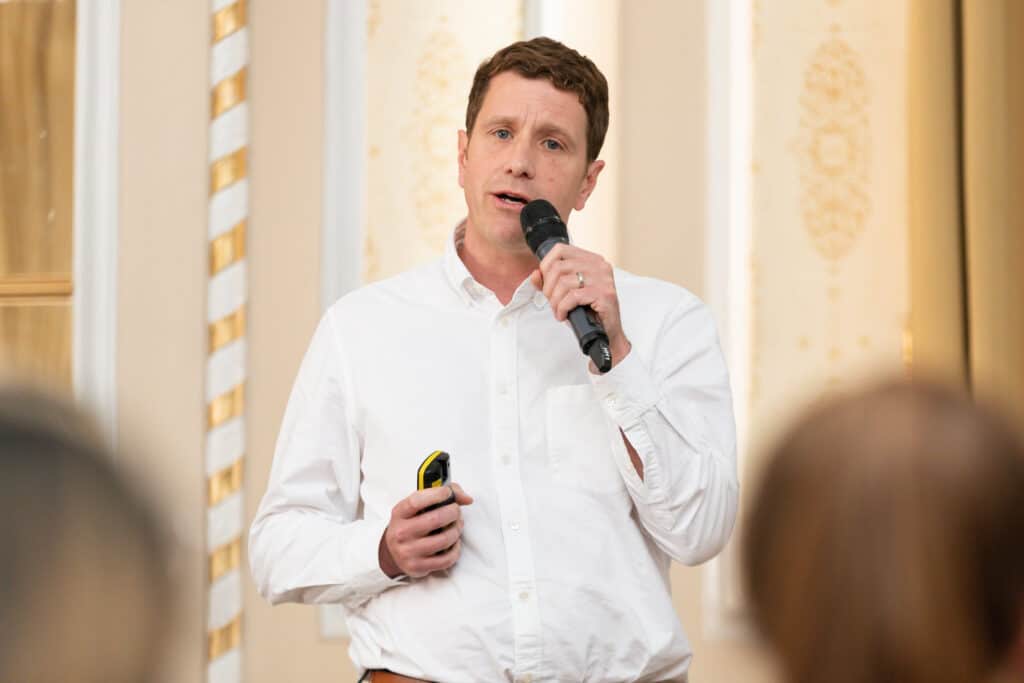
Although there are often “competing priorities in marketing”, with brands needing to decide whether to go for an immediate return in the short-term or the long-term for brand health, to be driven by data or break the mould, or to be big or be agile, these are all decisions and “budget eroding compromises”.
Highlighting the importance of marketing effectiveness through case studies, he also shared a number of ‘ingredients of brand building’ which included testing messaging.
The final talk to wrap up Northern Marketing Festival was an insightful deep dive into Jaywing’s analysis of 60,000 AI queries from Google’s US Beta to help brands navigate the next iteration of search.
Ryan Dean, organic media director at Jaywing and Sam Cant, SEO lead at Jaywing, took to the stage with an overview of how the potential of AI in marketing is “only just being realised” and what AI in search means.
There are three burning questions on every marketer’s mind: Does my search marketing strategy need to change?; Am i investing enough in SEO?; Is this the end of traditional search traffic?
It’s why Jaywing have dubbed this ‘SERPAgeddon’, said Sam Cant, with the agency creating this major piece of research on AI’s impact. The top level insights from the research discovered that 23% of search engine result pages are showing an SGE or AI overview snippet, but this is still a “huge opportunity to take advantage of” to drive brand visibility and traffic.
The duo explained how intent tracking across SGE allows marketers to adapt its approach to optimisation, with Ryan Dean adding that the “fundamentals of search aren’t going anywhere”. If brands stick to those core fundamentals, it’s an opportunity to “capitalise on them”.
Brands should talk to agency partners about technical foundations to ensure the website is optimised, include on-site and product tagging, and editorial, PR and authority to look at opportunities for brand building, content and authority as well as speaking to CMOs about marketing strategy and investment.
Thanks to everyone who joined us for Northern Marketing Festival this week across Newcastle, Leeds and Manchester! You can read all the highlights of each day over on the Northern Marketing Festival page here.
Headline partner
Event partners and supporters

